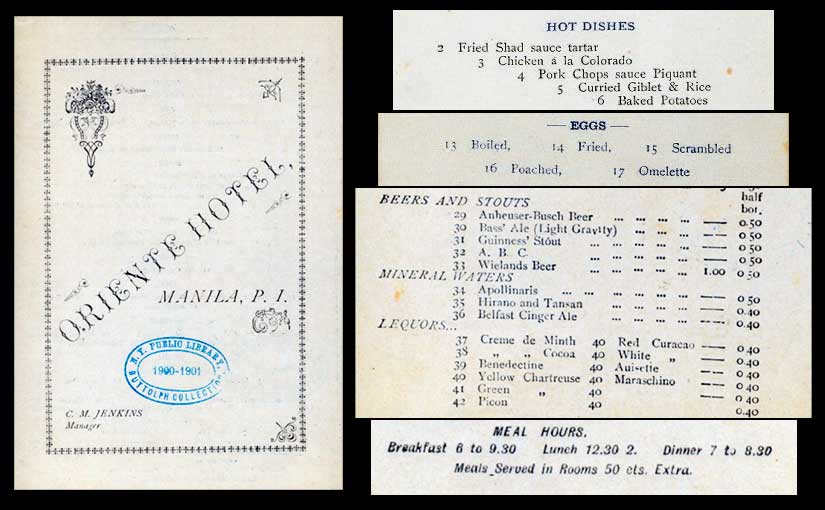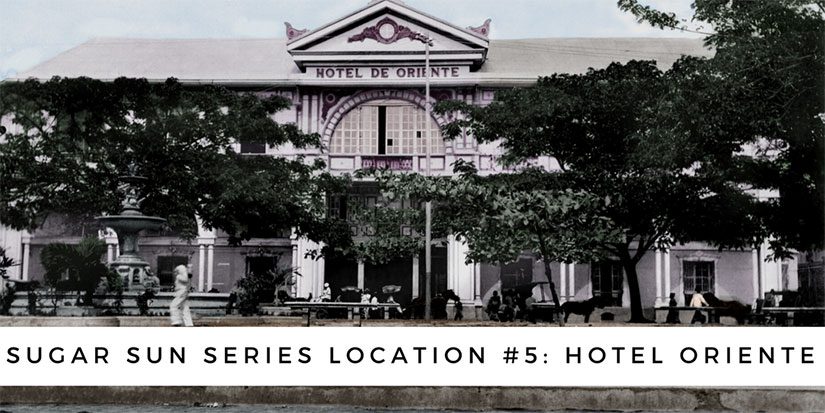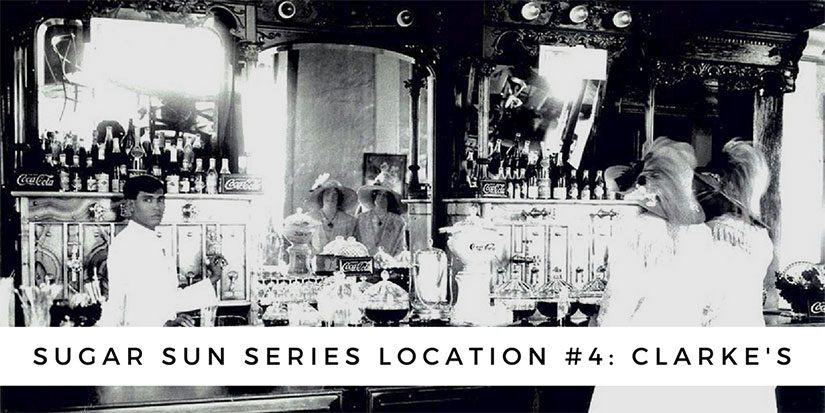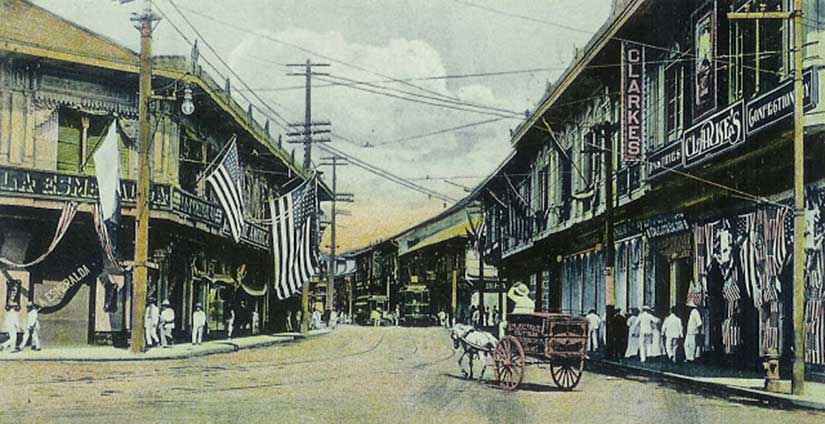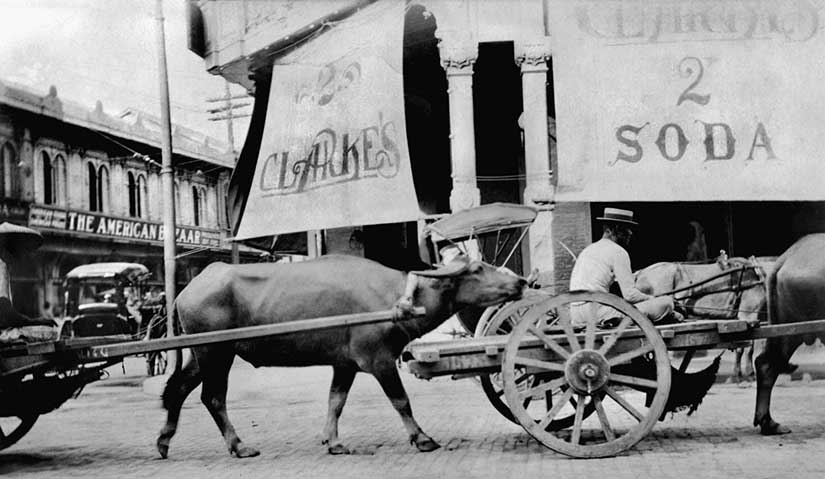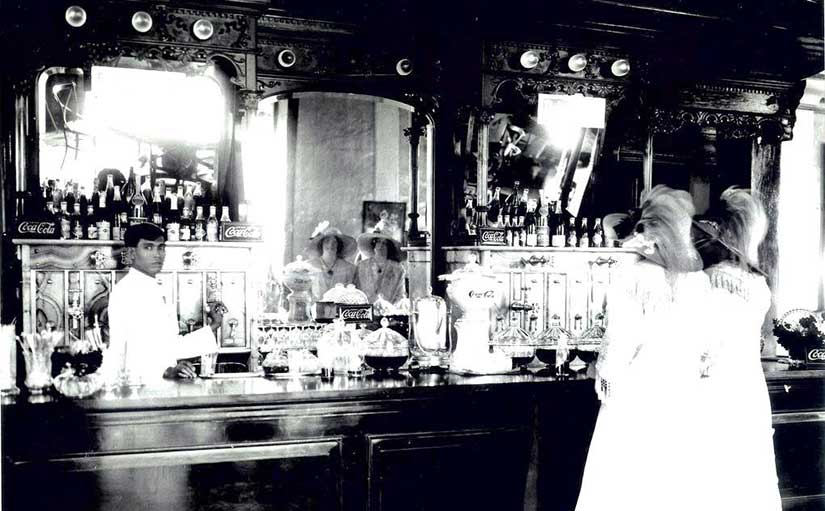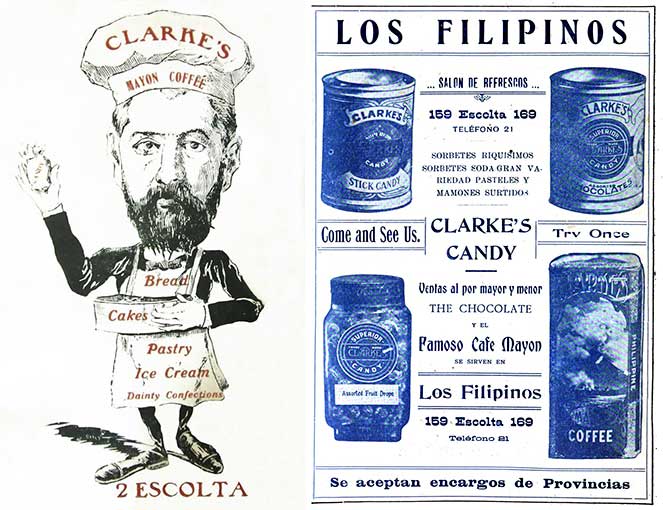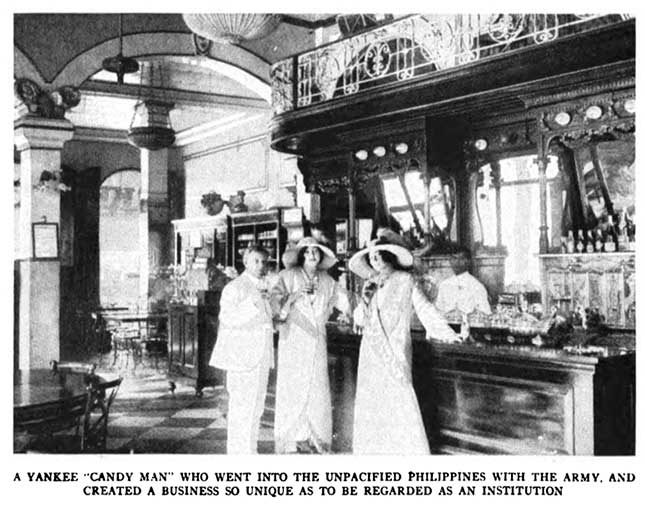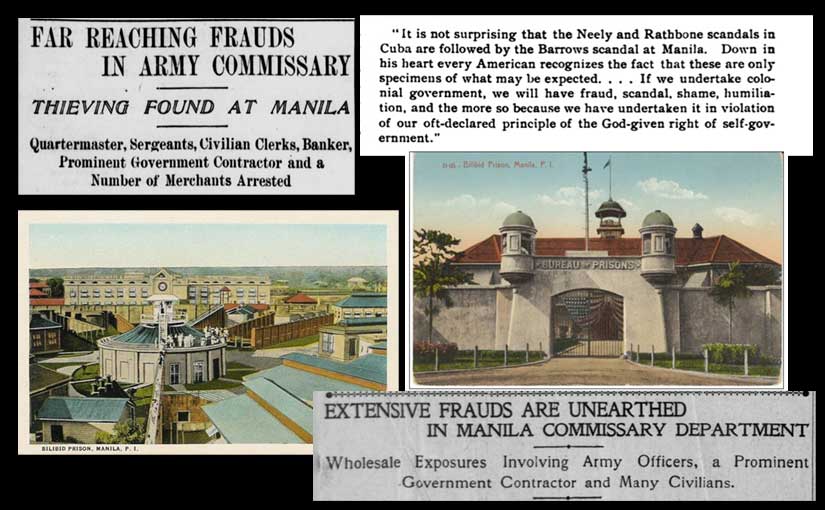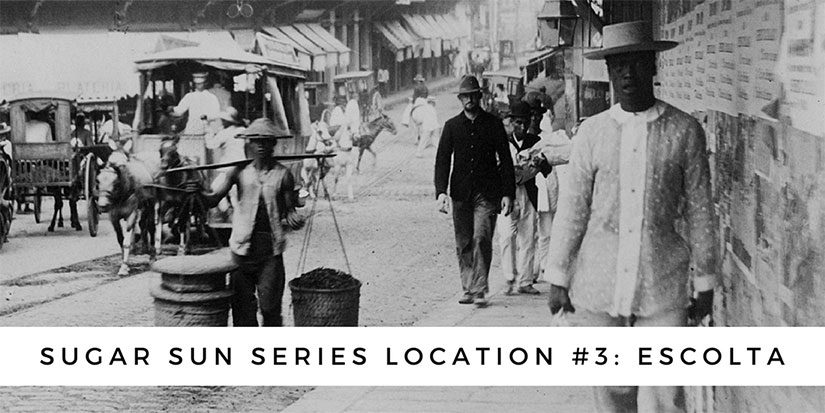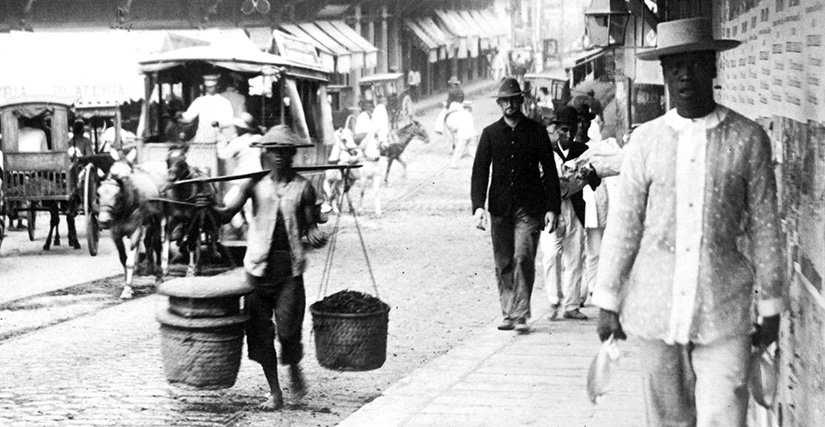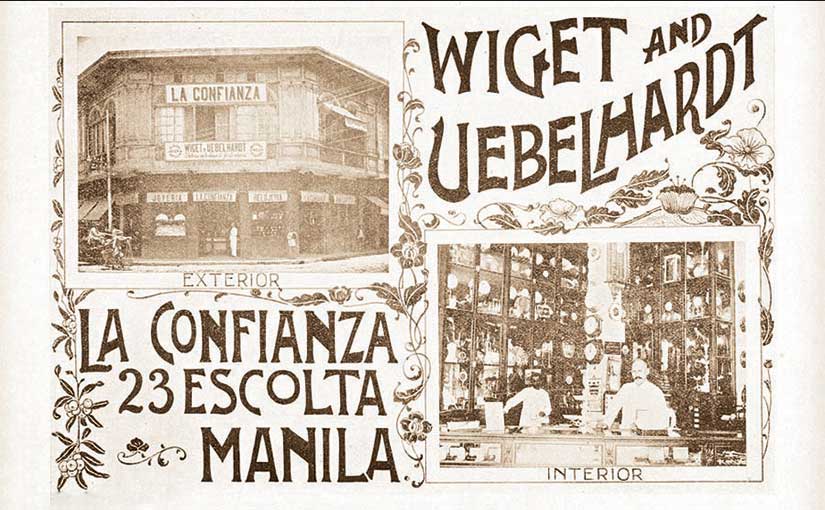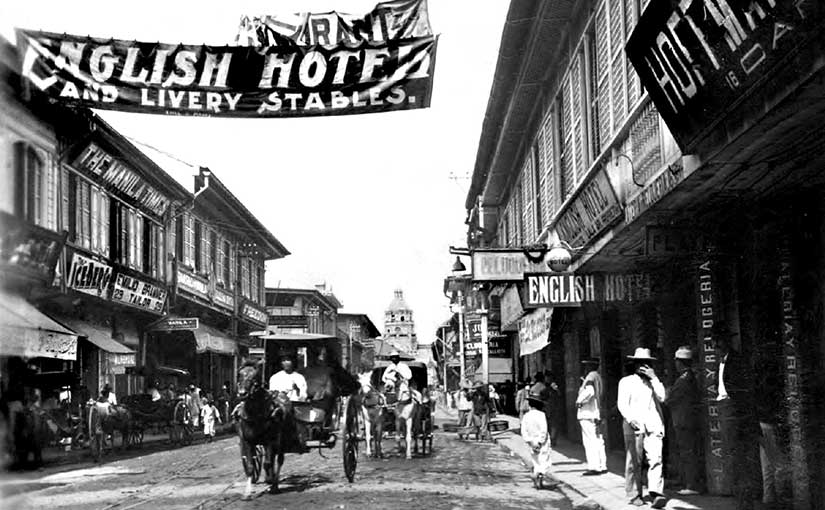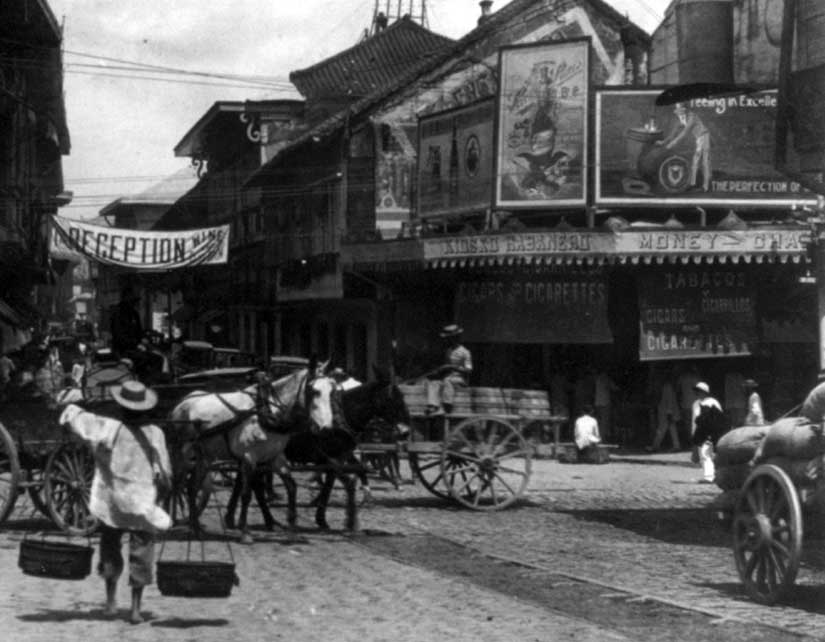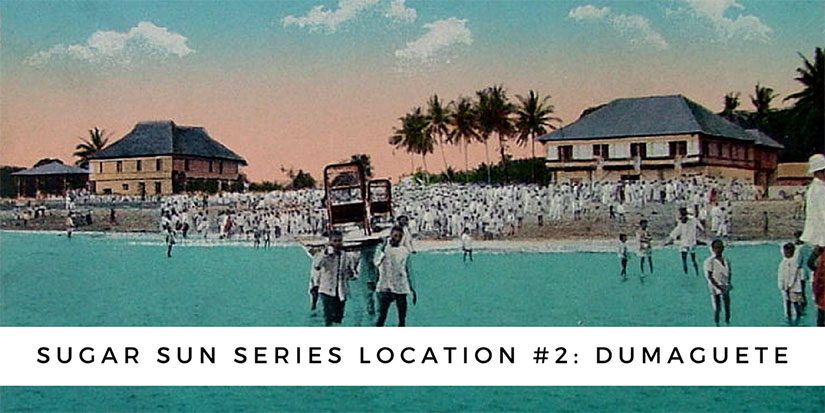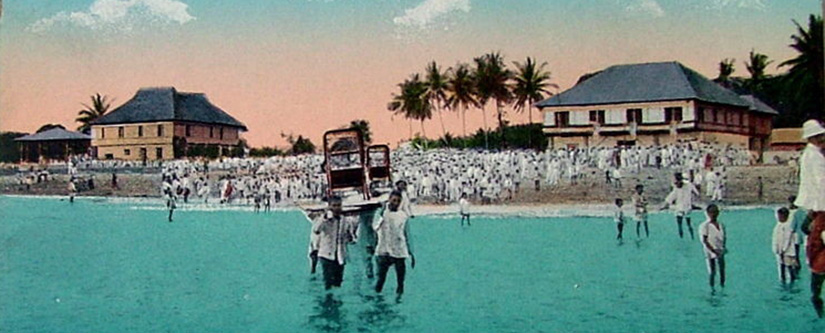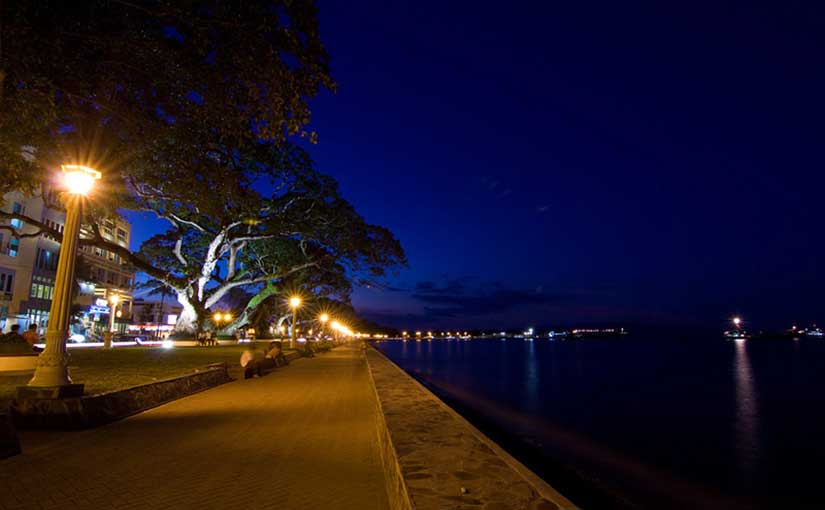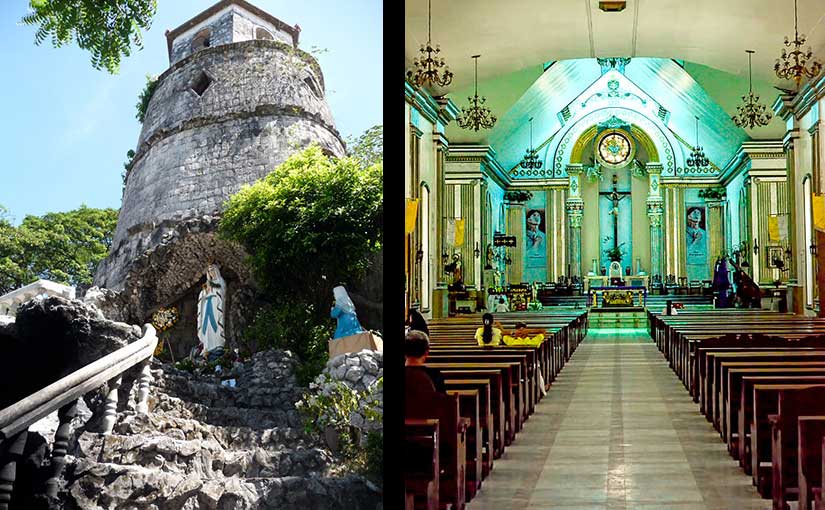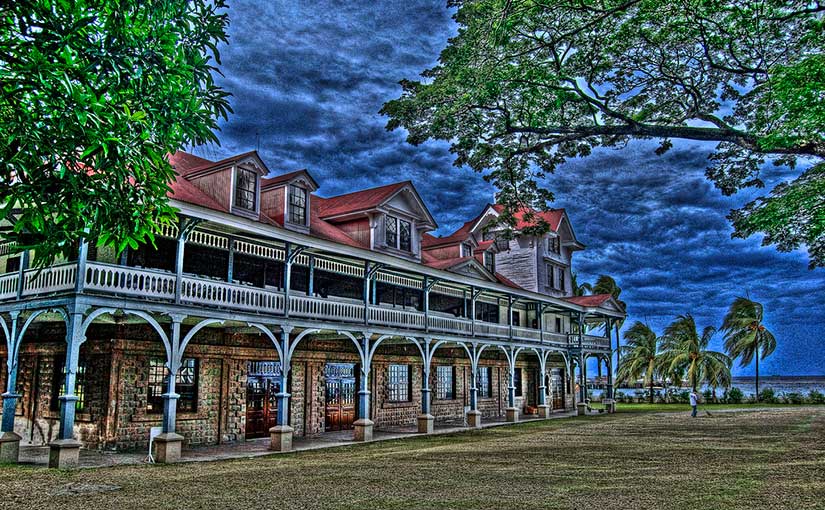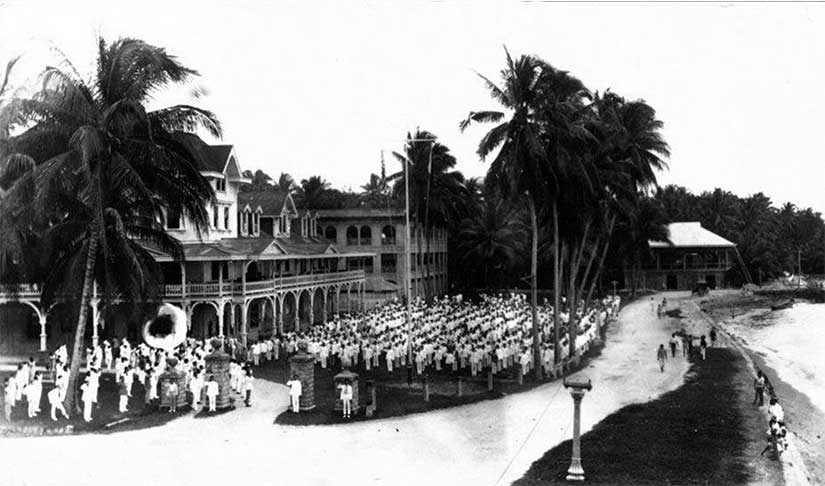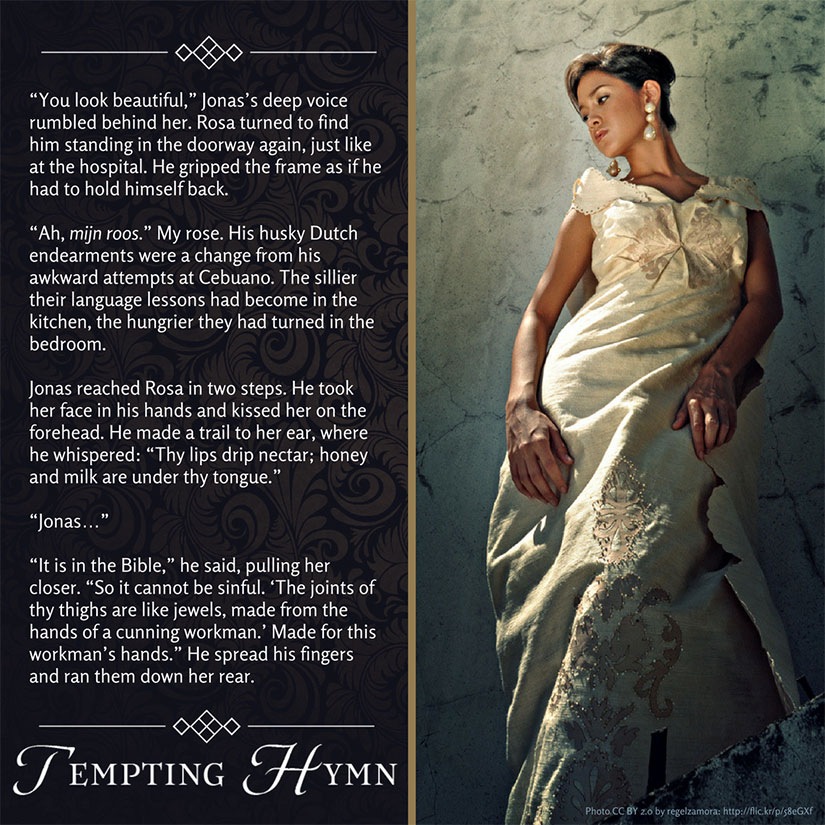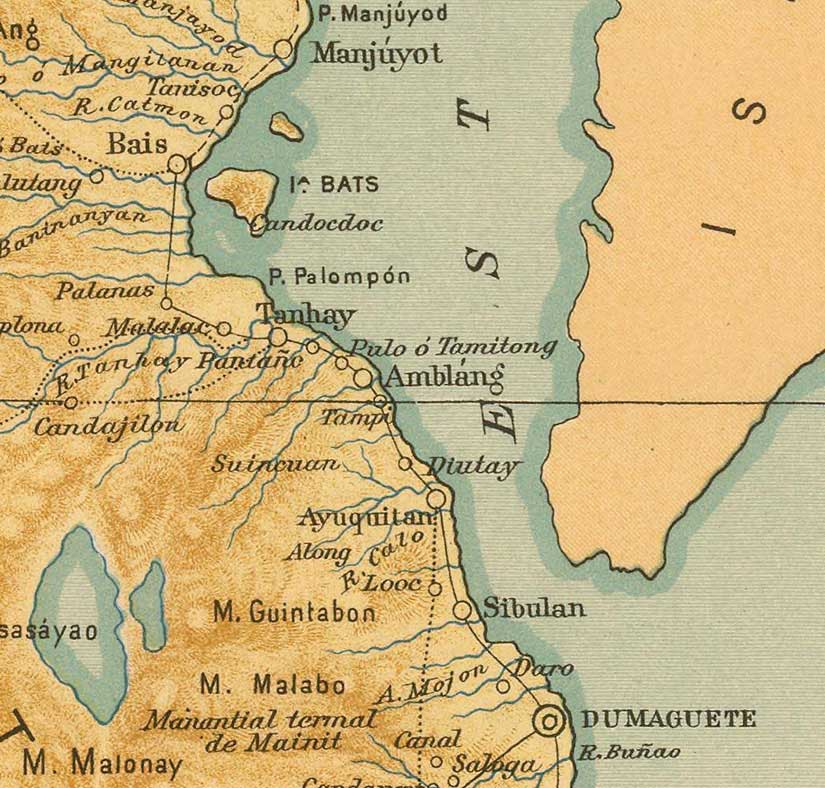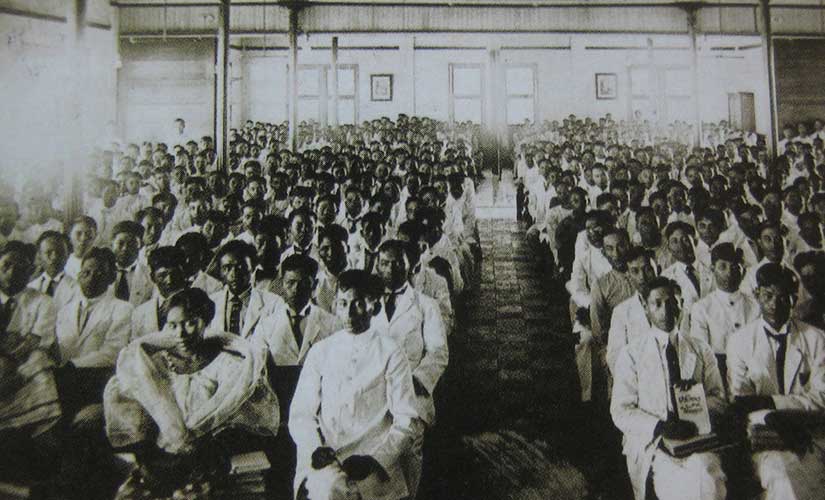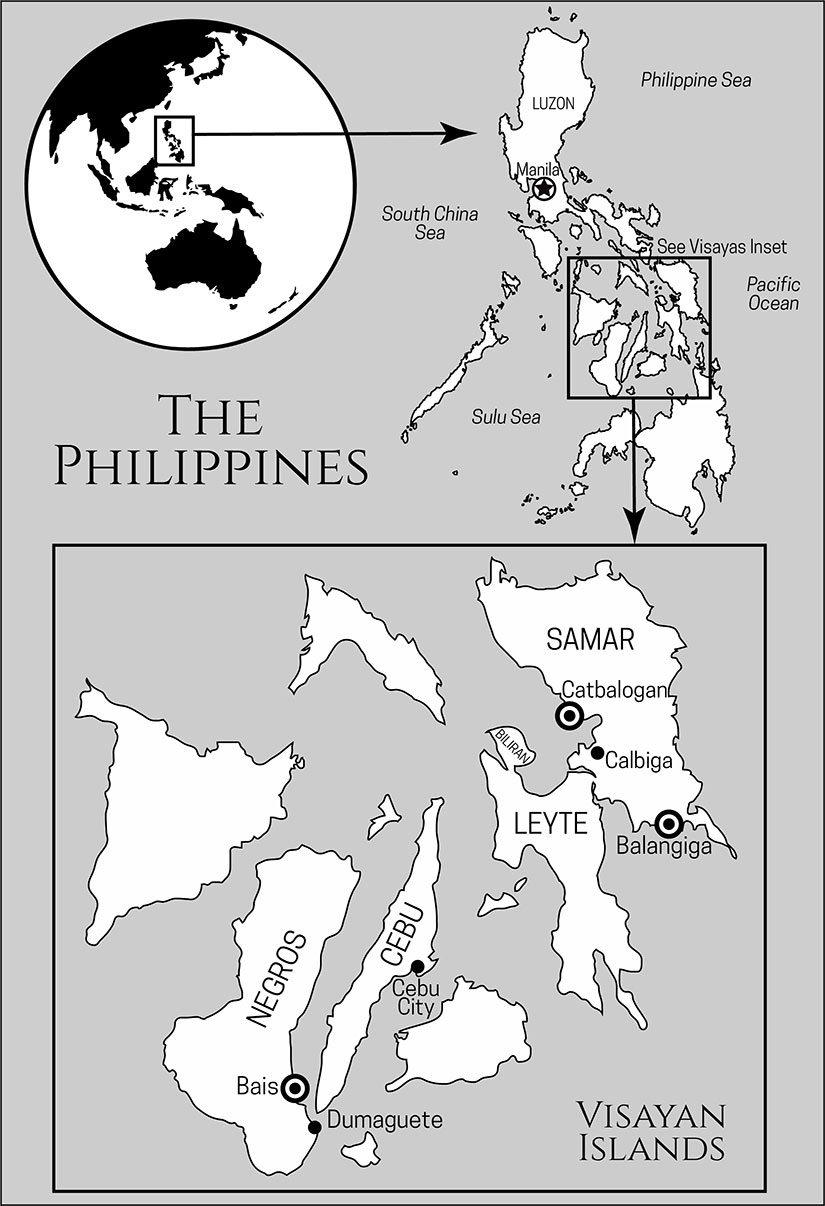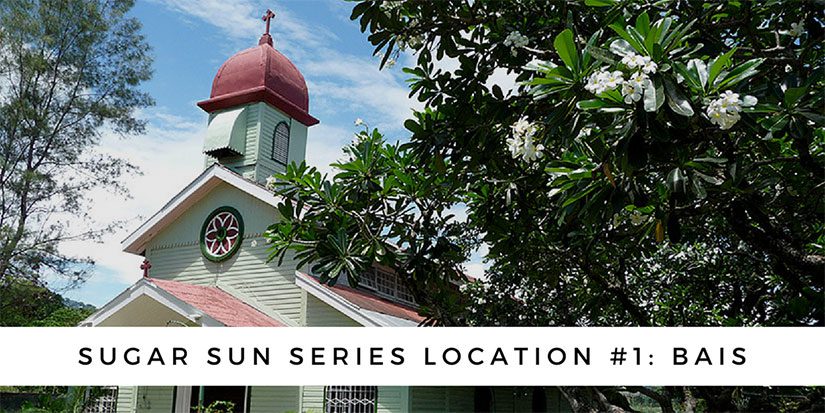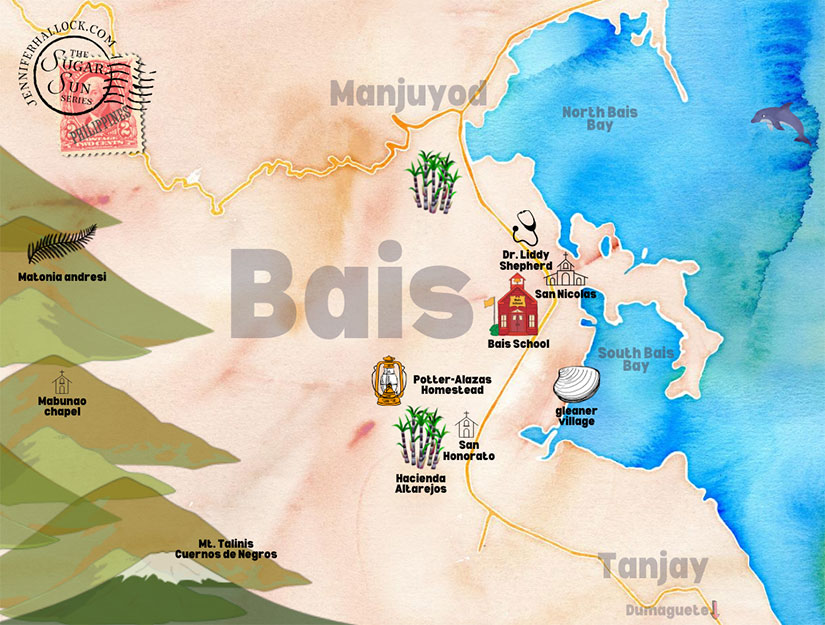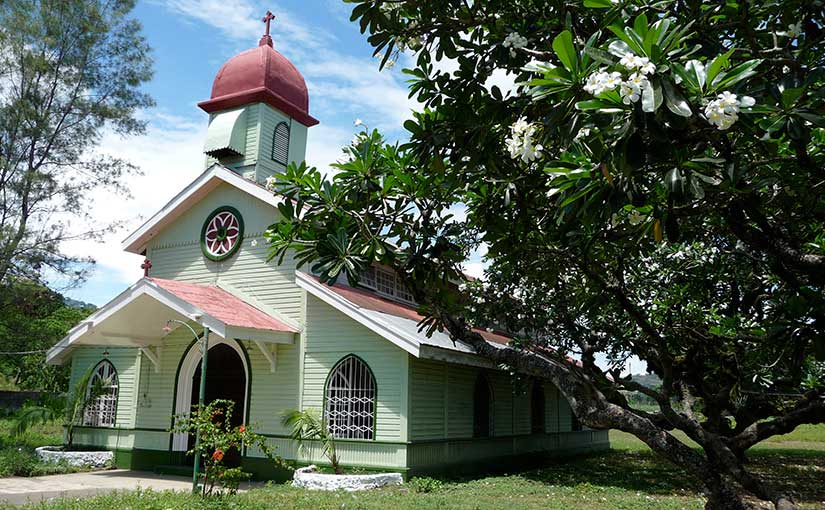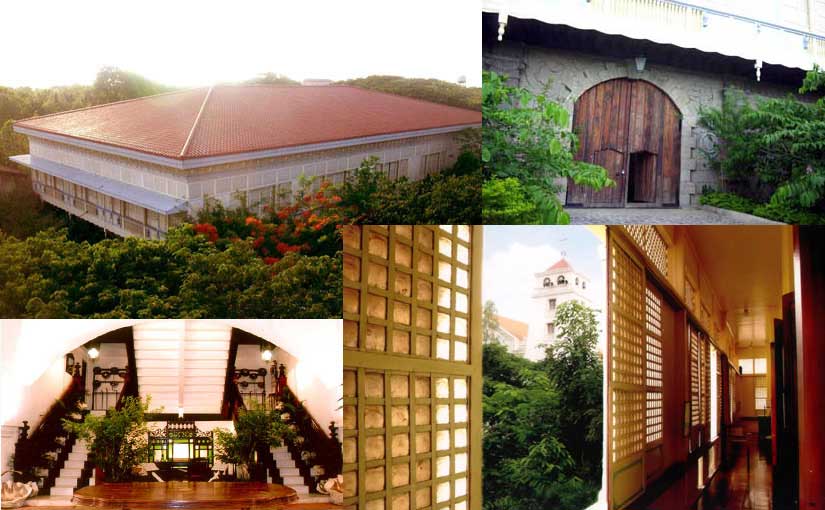In Hotel Oriente the establishment itself is a character—but decidedly not a romantic one. The American guests cannot figure out how to sleep in the beds, the manager runs out of eggs at breakfast, and water pours down the walls when an upstairs couple gets too frisky in the bathtub. I embellished, but I was not that far off the mark: the first two happened at the real Hotel Oriente in the Escolta area of Manila, and the last one took place at the Army hotel my father-in-law managed during the Vietnam War.
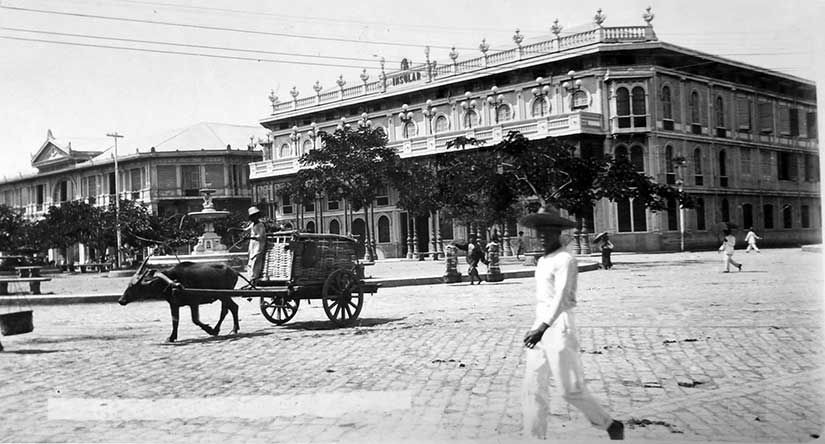
When the real Oriente opened its doors in 1889, it was the place to be. José Rizal himself stayed in Room 22, facing Binondo Church. Even the food was good. According to a contemporary journalist, a 21-year old woman from Maine: “Its chicken, chile peppers, and rice are a revelation…[and] it dispenses a curry equal to the finest productions of Bombay or Calcutta.” (Are you thinking, “What does a 19th century Mainer know about curry?” Me, too.)
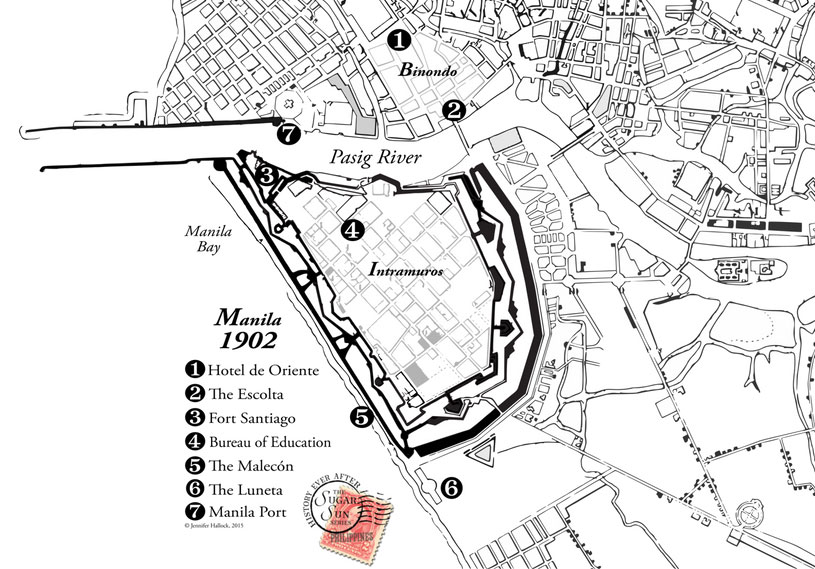
The 83 rooms were always the hotel’s best feature. Another American account said: “I expected to find a regular hole, but really I have a nice large room, hard wood floor, electric lights, etc, etc. The bathrooms are all tiled, sanitary plumbing, fine large court, [and] tropical plants.” By the way, those plants entangle both Georgina and Della in their turn.
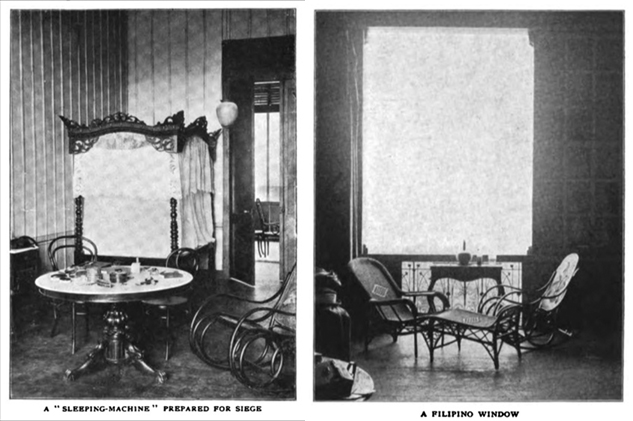
Of course, if you are getting the picture that Americans were difficult to please, you are right. Moreover, they never recognized their own provinciality. They especially had trouble with the mattress-less bed. The perforated cane bottom allowed the contraption to breathe, logically trading coolness for softness, but one guest had so much trouble figuring the thing out that he slept in the wicker chair by the window instead.
Still, the Americans thought that they improved every place they went, and the Oriente was no different:
What an establishment! How shiftless and dirty, and how it smells! The building itself is well enough, being large and airy, but it is conducted on the Spanish plan of dirt and sloth, by a manager whose watchword has evidently been mañana for all the years of his life. Now, he is forced to deal with a people who insist that all things be done, completed, finished, the day before yesterday. The result to his dead brain is almost insanity. He looks at us in a dazed manner and moans out that he has no rooms, muttering constantly the one all-expressive word: Americanos, Americanos.
I might have been muttering the same thing, too, and I am an Americano. While the Yankees had only been in the imperialism biz a few years, they had already adopted all the ennui and petulance of experienced Great Gamers.
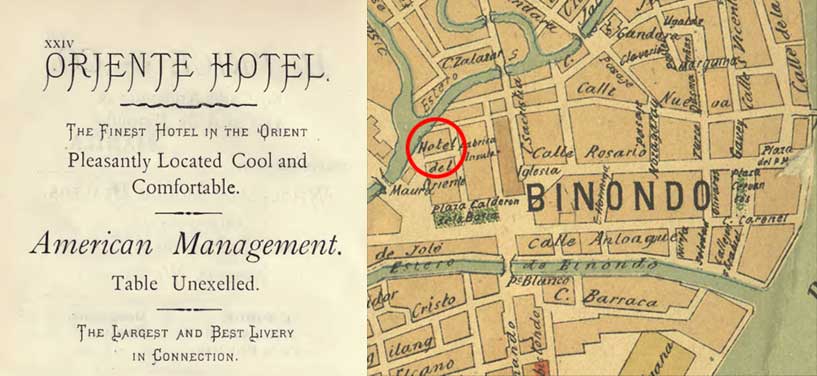
One Minnesotan did try to whip the hotel into shape: West Smith, a volunteer who had fought the Spanish in the Battle of Manila in August 1898. He took over the Oriente in late 1902 and continued to manage it until it was transformed into the Philippine Constabulary headquarters in 1904. After that he worked for The Great Eastern Life Assurance Company. He met his wife, Stella Margaret Case, in Manila while she was visiting her sister, a stenographer for the Insular Ice Plant. If you see similarities in names here—Moss North from West Smith, and Della from Stella—you would not be wrong. It’s how I do.
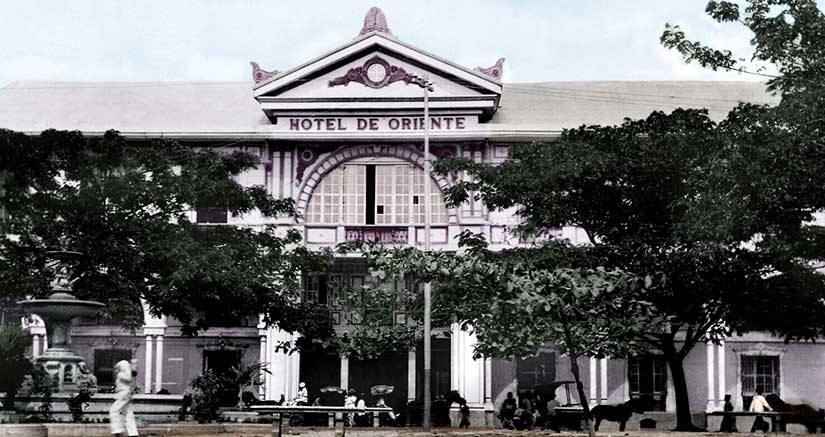
And, speaking of names, the hotel itself had many. Hotel de Oriente was the name plastered across the exterior molding, but all of the following were used: Hotel d’Oriente, Hotel el Oriente, Hotel Oriente, Hotel Orient, and then every single one of these in reverse order. I keep with the American tradition by using two names interchangeably as if I don’t know the difference. Ignorance is bliss, right?
